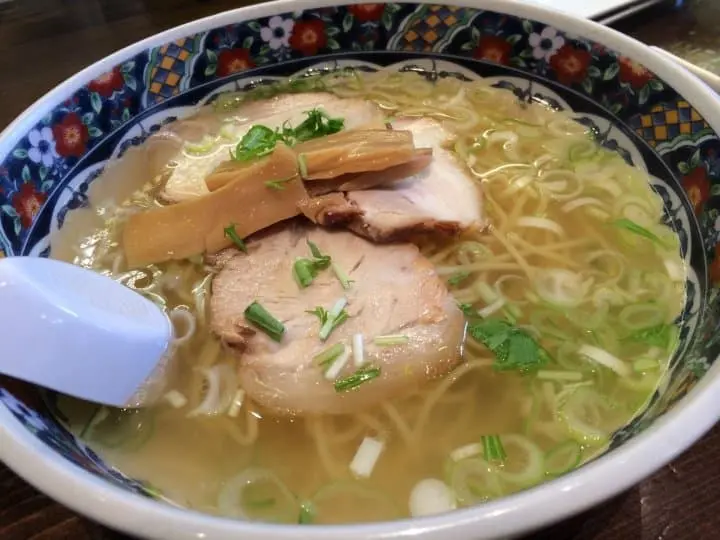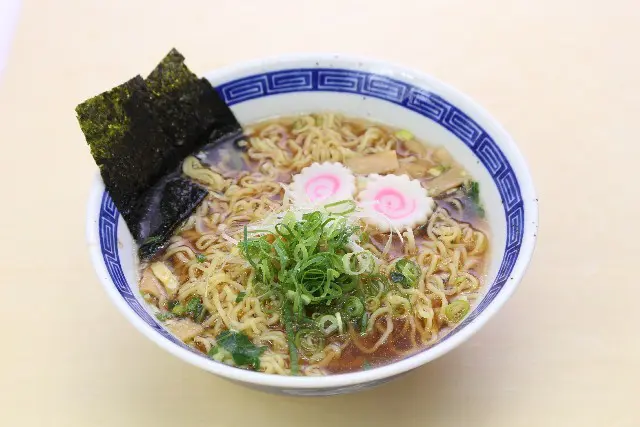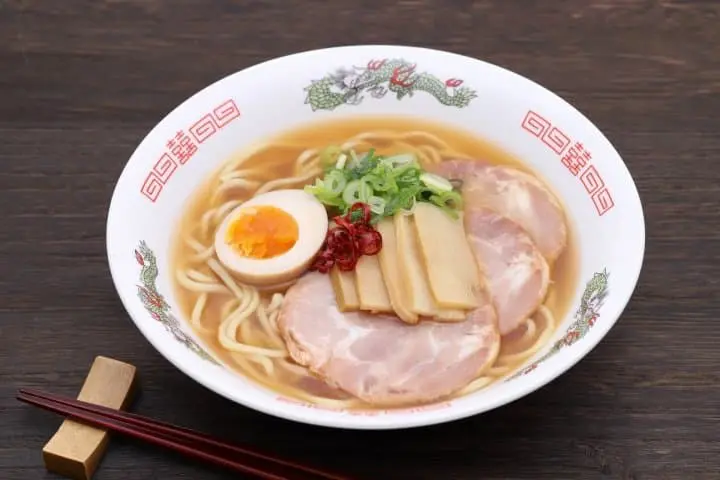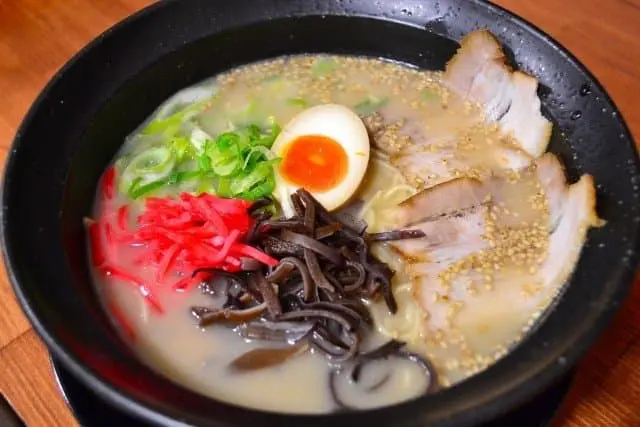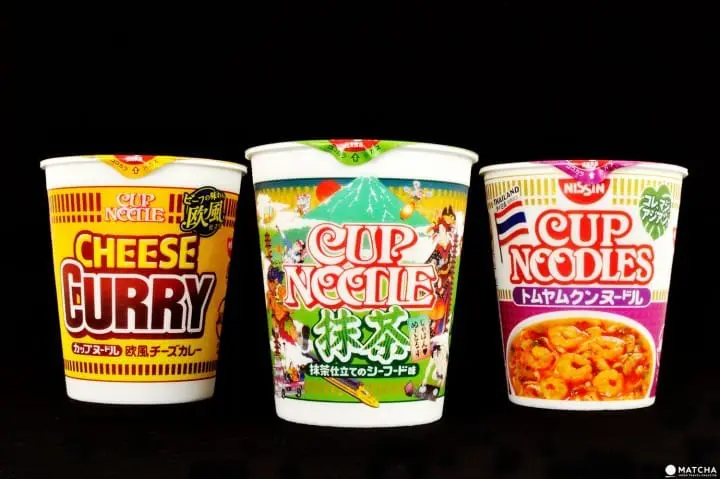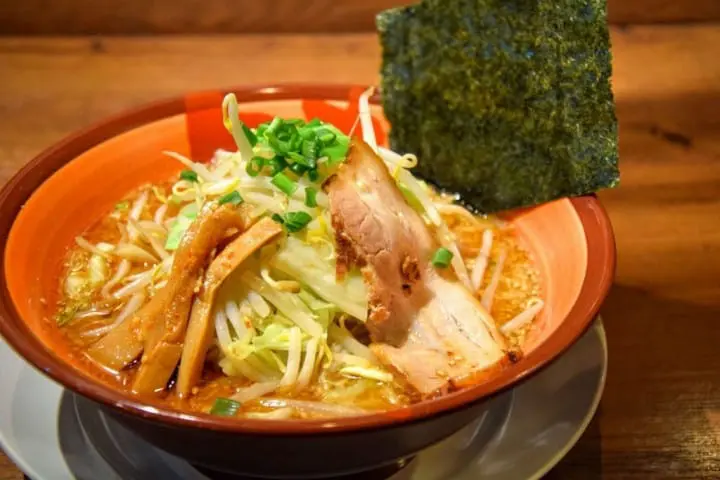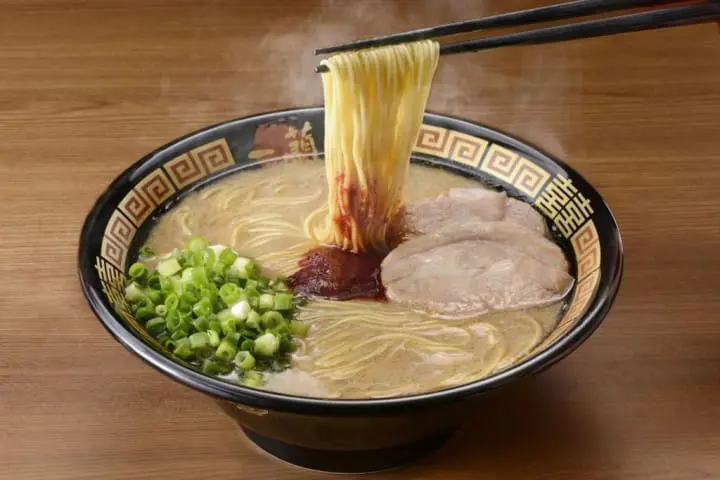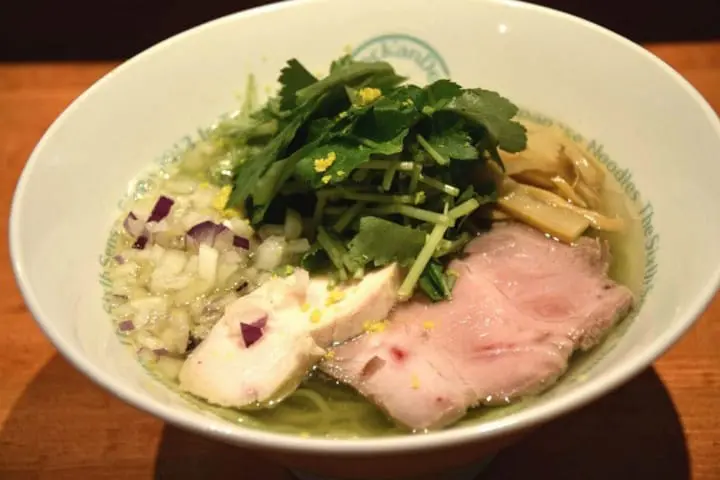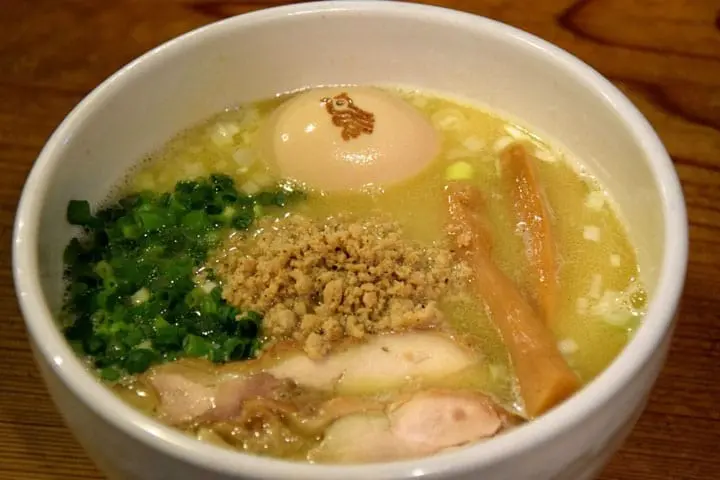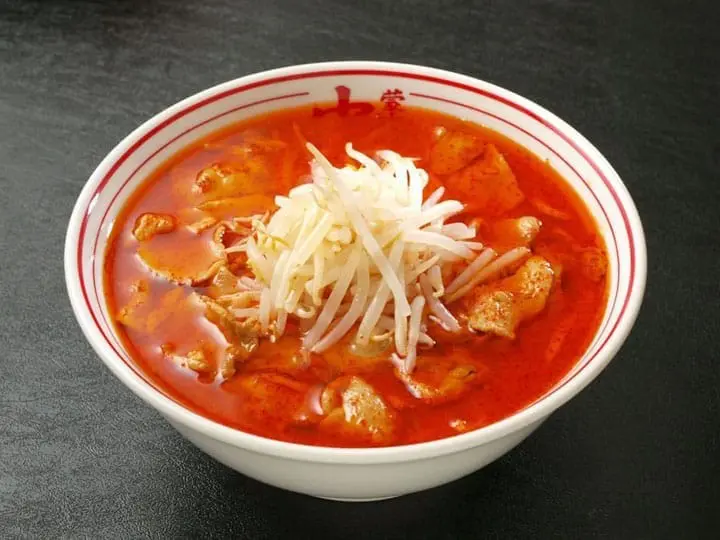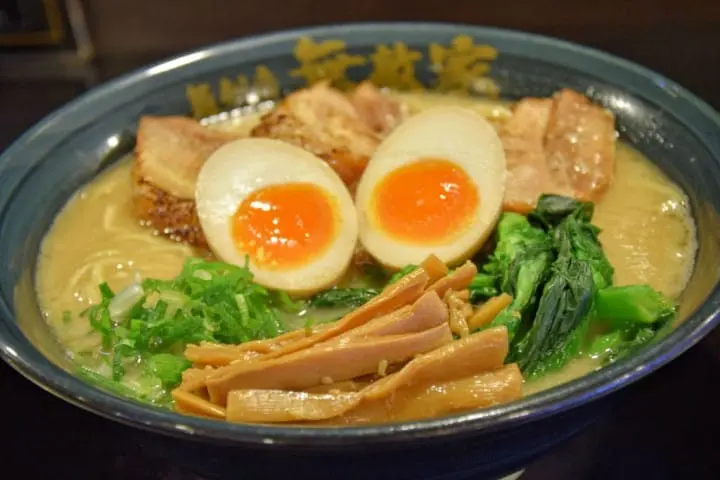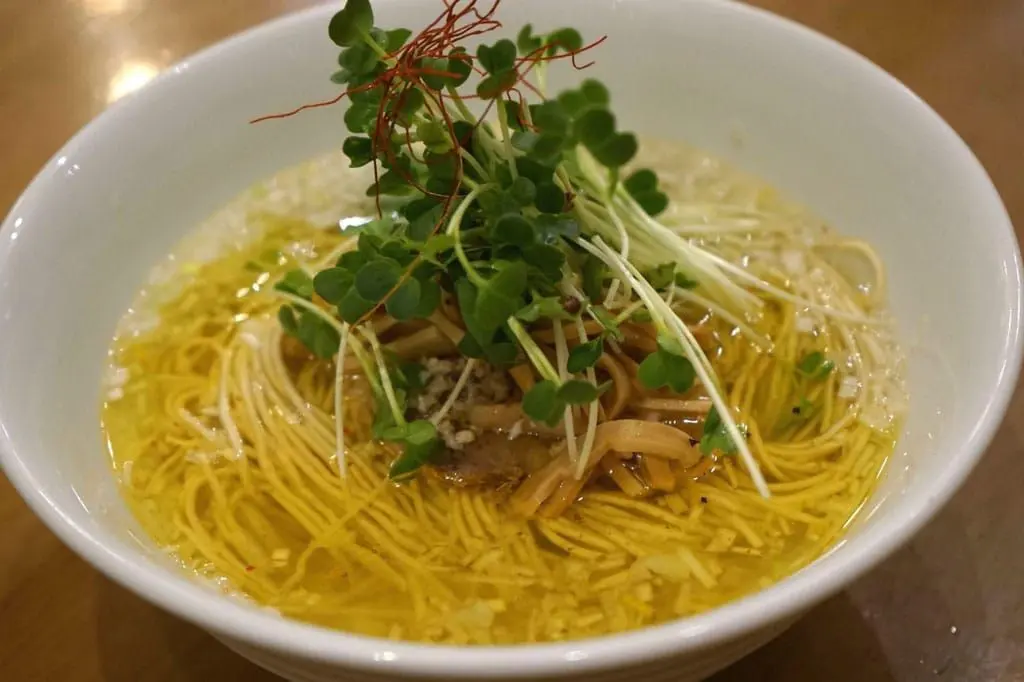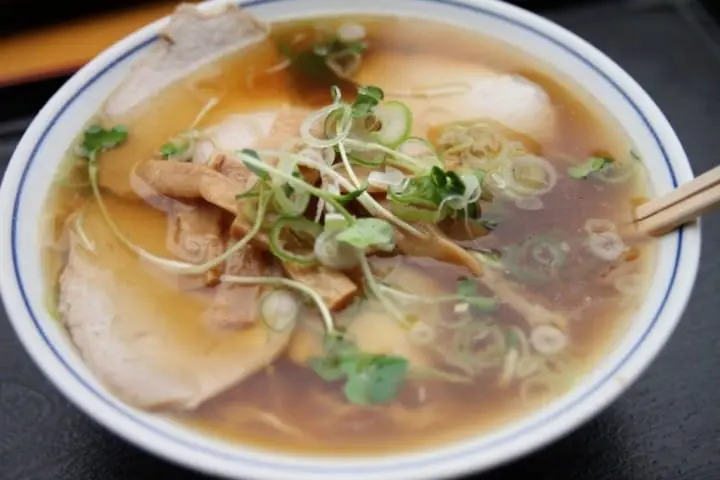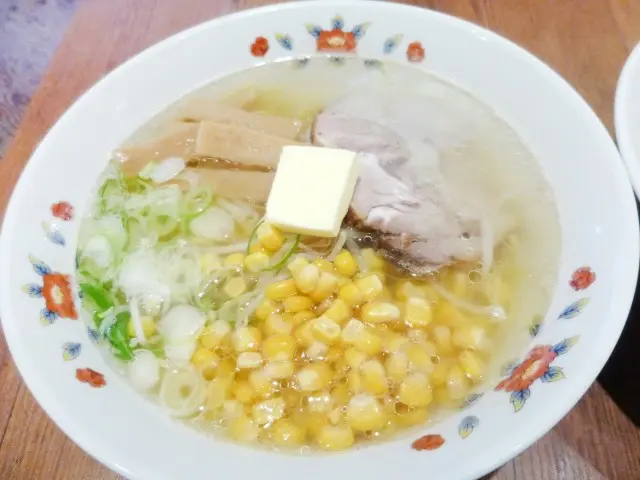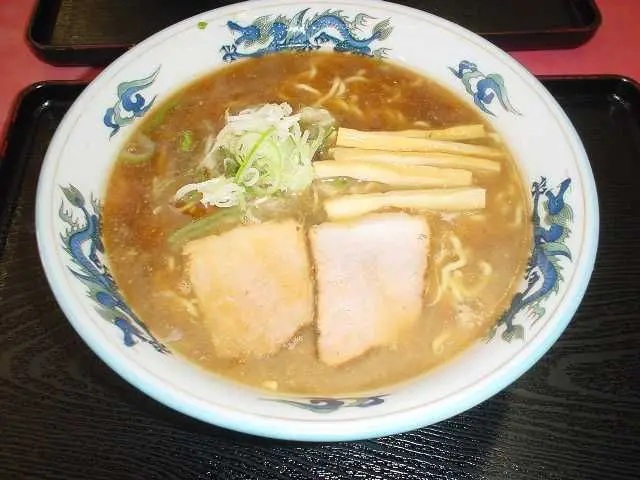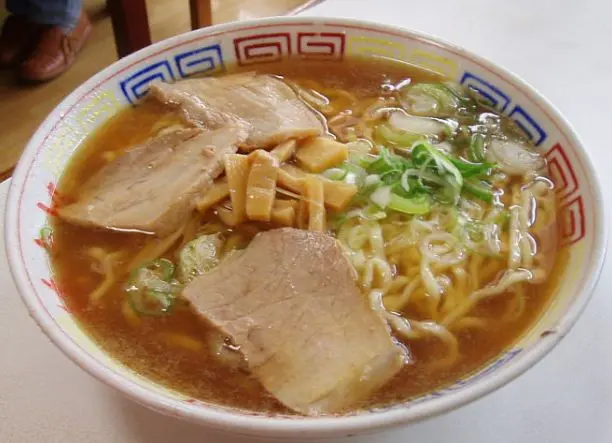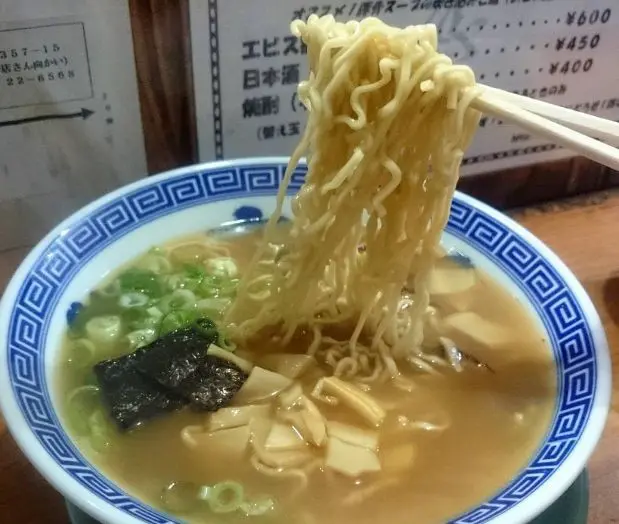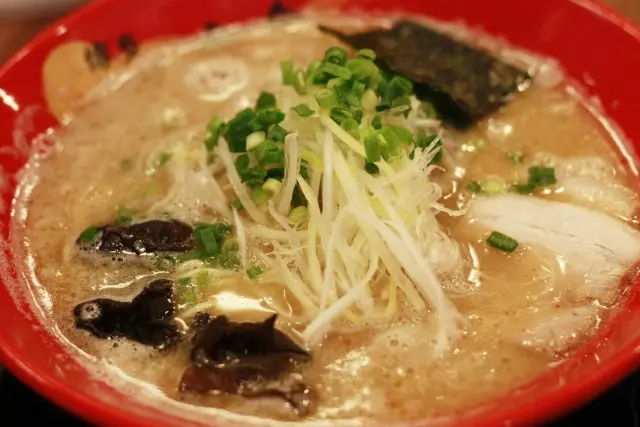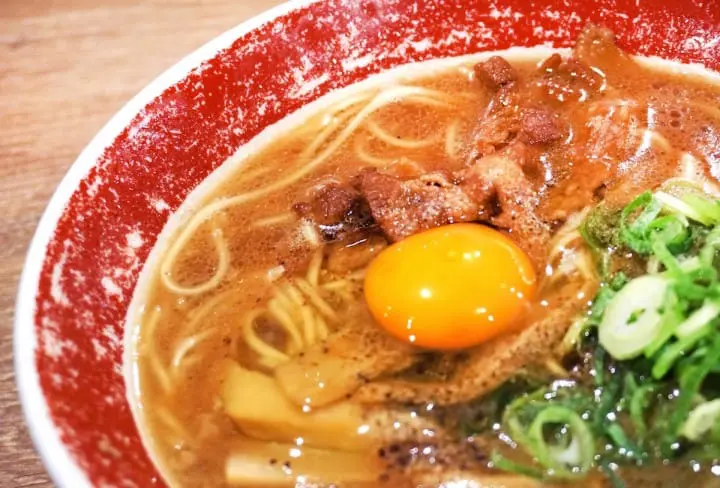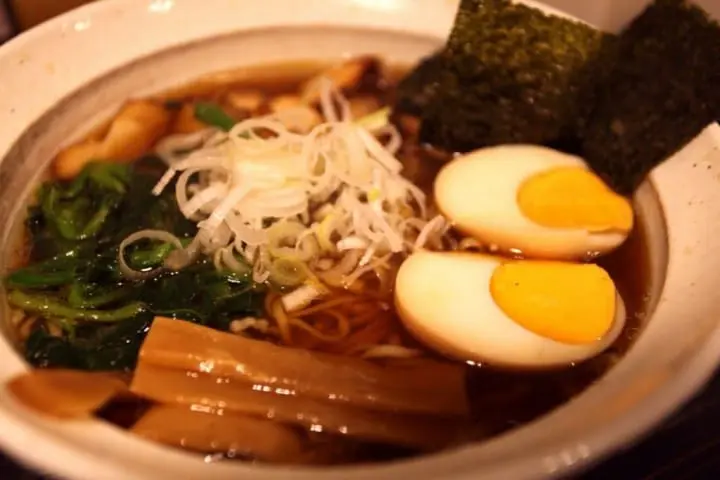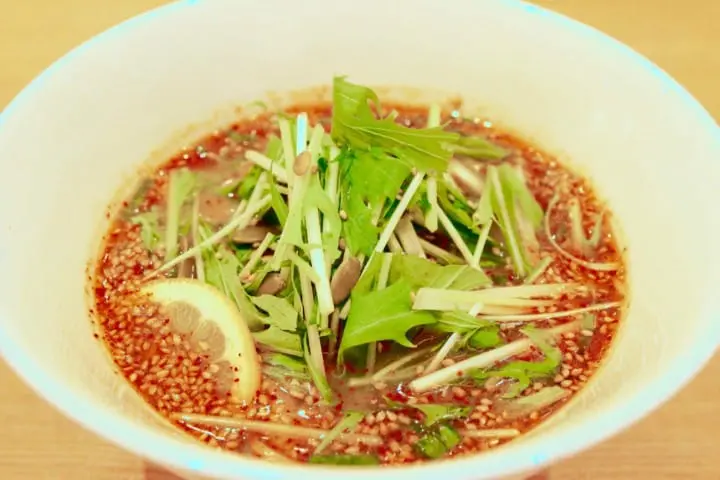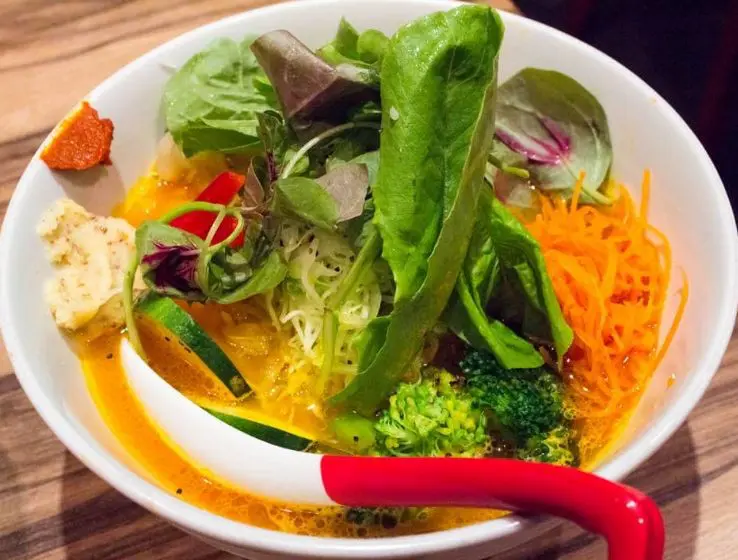Start planning your trip


Ramen is one of the most popular dishes in Japan. We introduce the best-known ramen types, from shio to shoyu, to tonkotsu and miso, and take a look at regional variations, In this article, you will also find ramen restaurant recommendations in Tokyo and more.
The modern ramen scene has a wealth of serving variations, from the broth, like tonkotsu, shoyu, and miso. Some ramen has thick noodles and others have thin noodles. Some ramen is eaten is cold, with dipping sauce, and some noodles are served in soup.
This article is a comprehensive guide to enjoying one of the best-known Japanese soul foods: ramen. We introduce the kinds of different ramen, how to eat them properly, and introduce famous ramen restaurants in Tokyo.
1. Types of Ramen
2. Typical Ramen Toppings
3. Nutrition of Ramen
4. How To Order Ramen
5. How To Eat Ramen
6. 10 Popular Ikebukuro Ramen Shops
7. 19 Regional Varieties of Ramen from All Over Japan
8. Where You Can Eat Regional Ramen
9. Michelin-Starred Ramen Restaurants
10. Five Halal And Vegan Ramen Shops
There are many different types of ramen that depend on the soup base (e.g. shio, shoyo, miso, tonkotsu) and the type of ramen noodle used. Below are the major varieties of ramen found in Japan and throughout the world.
Shio ramen, or salt broth-based ramen, is known for its light flavor. The standard broth is made by boiling down chicken bones and seafood products (such as dashi stock, dried sardines and bonito flakes), and is usually transparent.
Shoyu, or soy sauce ramen is the most common kind of ramen. The broth has the fragrance of soy sauce and a deep, rich flavor that is delicious and popular with most diners. Similar to shio ramen, the broth is usually made from chicken bones (“torigara”) and seafood products; some restaurants may also add other ingredients like pork bones ("tonkotsu”).
Miso ramen has a miso paste base for the broth. Restaurants in Japan that specialize in miso ramen use homemade miso to make their soup. These soup recipes feature different kinds of miso, like charred miso, white miso, red miso, soybean miso, barley miso, and rice miso. The toppings are similarly abundant, including sweet corn, butter, and sauteed vegetables.
Tonkotsu ramen is a popular type of ramen featuring a hearty broth made by boiling down pork bones. Tonkotsu ramen has a pronounced smell compared to other ramen varieties, which people either like or don't. Tonkotsu broth takes many forms; it can be light and smooth, or thick and rich enough to stick to the spoon. There are also shoyu-tonkotsu and shio-tonkotsu soups, which combine soy sauce and salty flavors with the tonkotsu.
The noodles in tonkotsu ramen are usually very thin. A typical tonkotsu ramen is topped with onions, char siu pork, bamboo shoots, finely-chopped kikurage mushrooms, and pickled ginger.
Tsukemen is a ramen dish similar to zaru soba. The noodles are rinsed off and piled into a colander or bowl alongside a bowl of thick soup that can be either hot or cold. Take a mouthful-sized portion of the noodles with your chopsticks, dunk them into the soup, and enjoy.
There is an abundant variety of tsukemen soups, each with their own particular emphasis: acidity, sweetness, rich seafood flavors and more. Tsukemen noodles are thick and tend to be served in larger portions than regular ramen. You can also request “soup wari,” which is hot water for diluting the leftover soup. You can then drink it straight.
Cup noodles are pre-packaged types of ramen and other noodle dishes that can be easily picked up and made at home or on the go. Available in a wide variety of standard and seasonal flavors, cup noodles have been a staple of busy people in Japan since their debut in 1958. If you'd like to learn more about cup noodles in Japan, why not head to the Momofuku Ando Instant Ramen Museum in Osaka, or the Cup Noodle Museum in Yokohama?
Cup noodles are available for sale at convenience stores, grocery stores, and online at Amazon Japan.
And if you'd like to learn more about seasonal foods in Japan, take a look at A Taste Of Japan - Seasonality In The Snack Aisle.
Below are common ramen toppings, added to compliment the soup and noodles of every bowl.
Menma are fermented bamboo shoots. Their pleasant crunch provides an additional textural element when eating ramen. Some restaurants also make their own menma.
Char siu are slices of roasted or boiled pork, often flavored with soy sauce.
Naruto-maki are steamed cakes made of processed fish paste, with a whirlpool shape when sliced into cross-sections. It is said that they got their name from the whirlpools that form in the Naruto Strait, Tokushima prefecture.
Bowls of ramen in the western Kansai region tend to feature green spring onions, while their Kanto counterparts in and around Tokyo are usually topped with leeks.
Boiled eggs for ramen toppings are typically flavored; it is common for restaurants to make soft-boiled eggs and marinate them in a special sauce. The taste of the rich, thick yolk is irresistible.
These edible pulses are artificially grown without exposing them to sunlight, creating vegetables that are rich in nutrients like vitamin C. The bean sprouts from western Japan are thin and long, while those in eastern and northern Japan are thick and crunchy.
Kernels of sweet corn are often used to top bowls of miso or shio ramen. The practice began at restaurants in Sapporo.
Usually, butter is a topping for miso and shio ramen. Restaurants place a thick pat of butter on top of the noodles right before it’s time to dig in. This practice was originally done in Sapporo before it spread to the rest of Japan.
Nori are thin, edible sheets of seaweed. Their crisp texture and aroma are also used in sushi. They provide high mineral and nutrient content, and a whiff of the sea.
A variety of seaweed, wakame is quickly boiled and used as a topping for ramen. With a firm texture, pleasant fragrance, and high nutritional value, wakame is a familiar foodstuff for Japanese people. There is also kuki wakame ramen, which uses wakame stalks as toppings for a delicious and unique texture.
Beni-shoga, or pickled ginger, is indispensable to any bowl of tonkotsu ramen, providing a layer of contrasting flavor. Ginger is pickled in salt, or sun-dried then pickled in plum vinegar. This popular ingredient is also used in takoyaki, okonomiyaki, and yakisoba.
These black mushrooms grow on fallen trees and dead branches from spring to autumn. They are mostly eaten in Eastern Asia and as a topping to bowls of ramen in Japan.
For more information on popular ramen toppings, take a look at The Secret to Delicious Ramen - 7 Basic Toppings!
Although there are a great number of healthy Japanese foods to choose from, one in particular being sashimi, ramen counts as a comfort food. An average bowl of ramen without any extra toppings or seasoning starts at about 500 kcal and can go up to over 2,500 kcal, depending on what it comes with.
Standard bowls of ramen are typically high in fat (including saturated fats) and sodium, while instant ramen is quite high in sodium and low on other important vitamins and minerals. However, not all ramen is created equal, so if you are very calorie and sodium conscious, you may want to consider the vegetarian or even vegan ramen options mentioned later in this article instead.
There are two ways: at some restaurants, you place an order directly, and at the others, you buy a food ticket from a vending machine to place your order. For the latter option, this replaces the menu in the restaurant. Buy the ticket after confirming your order.
When ordering something else, some restaurants will accept cash at the table, while others require that you go buy another ticket, so look carefully before you decide what you want to order. Tonkotsu ramen places have a “kaedama” service, where you can order noodle refills. Some places will include a kaedama set in the initial order, so be careful with your selection.
Ramen is enjoyed with chopsticks and a soup spoon. There is no particularly strict etiquette for eating ramen, but you should pay attention to these few points.
If you wait too long to finish the bowl, the ramen noodles will soak up the soup and get mushy, so make sure that doesn’t happen.
It’s normal in Japan to slurp the noodles when eating ramen. It is said that this brings out the taste of the soup.
We recommend eating the noodles and soup together for ramen. Pick up some noodles with your chopsticks and ladle some broth into your spoon with your other hand. Using the spoon to stabilize and add soup to the noodles, slurp them up. The soup sticks to the noodles and provides a delicious and texture. If you run out of soup first, you won’t be able to enjoy the full flavor of the noodles.
Most ramen restaurants have condiments and pickles at the table, including black pepper, chili oil, crushed garlic, chili pepper, vinegar, and pickled ginger. Add them to your bowl as you eat to add variety to the flavor.
Hakata ramen restaurants allow for noodle-only refills, known as kaedama. It’s best to ask for this when you’re half done with the noodles, as the noodles are generally made-to-order. Don’t forget to leave some soup for your second helping of noodles.
Non-Hakata ramen restaurants typically do not have kaedama. If you’ve got a hearty appetite, order a large-size serving from the start, or get something from the side menu.
You can’t even walk a block in Tokyo without running into a ramen shop. Ikebukuro, in particular, is known for its competing ramen restaurants. You can enjoy ramen from nationally famous locations and smaller, more unique spots.
Specializing in miso ramen, Misoya Seibe boasts an incredibly thick, rich soup which has drawn out all the flavor and sweetness that miso can offer. It’s best to mix the toppings, noodles and soup together right before eating, so they all blend together evenly.
Address: Tokyo, Toshima, Nishi-Ikebukuro 1-34-4
Phone: 03-6907-0095
Website: http://www.misoya-seibee.com
When it comes to Hakata tonkotsu ramen, Hakata Ippodo Ichiran, is perhaps the most famous shop, well-known not only in Japan but also having locations in North America and Asia. The private booth partitions allow customers to eat freely, without being looked at by staff or other customers. The menu only offers tonkotsu ramen. When you arrive at your table, fill out the card to customize your bowl, including how strong you want the broth, and how hard you want the noodles. Ichiran has Tokyo locations in Asakusa, Shinjuku, and Shibuya, among others. Check their homepage for info about other locations.
Address: Tokyo, Toshima, Higashi-Ikebukuro 1-39-11, Sunnyside Building 102
Phone: 03-3989-0871
Website: http://ichiran.com/en/
Rockando Noodles has garnered attention for its low-calorie offerings, with soup that is made strictly with seafood only - no additional seasonings. The green yuzu-mitsuba noodles from Euglena, which have 59 different nutrients, are a popular menu item. Orders are taken via ticket.
Address: Tokyo, Toyoshima, Higashi-Ikebukuro 2-57-2 Cosmo Higashi-Ikebukuro 101
Phone: 03-5952-6006
Website: https://www.facebook.com/menyarockando/
Tori No Ana is the place to go in Ikebukuro for tori paitan ramen. The rich white broth is made by boiling down chicken bones until the liquid turns a cloudy white color. The noodles are topped by char siu chicken thigh meat and minced chicken.
Address: Tokyo, Toyoshima, Higashi-Ikebukuro 1-39-20 Keita Building 1F
Phone: 03-3986-2811
Website: http://torinoana.favy.jp/
The spicy miso noodles at Moko Tanmen Nakamoto are known for their addictive quality. The standard order is a “level three” miso tanmen, which is a faint red color. Increase the level for redder, spicier soup. You can choose your heat level, so ask the staff for advice and challenge yourself. If you can’t eat spicy food, Moko Tanmen Nakamoto also offers a mild shio tanmen. There are other branches outside of Ikebukuro, too. For more information, check out the homepage.
Address: Tokyo, Toyoshima, Higashi-Ikebukuro 1-12-15, Kindai Group Building 2 1F
Phone: 03-5954-1123
Website: http://www.moukotanmen-nakamoto.com/ (Japanese)
Kikanbo specializes in miso ramen so spicy you won’t be able to feel your mouth, and has a branch in Taiwan. A bowl of the miso ramen contains coriander, and comes with an abundance of toppings like vegetables and char siu. You can choose the level of spice, from one to five.
Address: Tokyo, Toyoshima, Higashi-Ikebukuro 1-13-14
Phone: 03-5396-4202
Website: http://kikanbo.co.jp/english
Enji makes its “veggie-pota” soup by cooking vegetables like potatoes, onions, and tomatoes down into a thick soup, then combining it with tonkotsu and fish broth. With the amount of vegetables that have dissolved into the soup, veggie-pota is practically a stew. You can choose from either wheat germ noodles or chewy noodles. The wheat germ noodles are savory and have a springy texture.
Address: Tokyo, Toyoshima, Higashi-Ikebukuro, 2-48-4
Phone: 03-3985-6405
A tonkotsu ramen shop, Mutekiya tops its bowls with thick slices of char siu pork that are soft enough to cut with chopsticks. Sprinkle on some bonito flakes to add a taste of the sea, and a wholly new flavor profile.
Address: Tokyo, Toyoshima, Minami-Ikebukuro 1-17-1
Phone: 03-3982-7656
Website: http://www.mutekiya.com/world/english.html
Tai-Sho-Ken innovated the deluxe morisoba. Naturally, the soup is specially made by Tai-Sho-Ken; so are the char siu pork slices, noodles, and menma. Tai-Sho-Ken goes to great pains when making the soup, in order to avoid any muddled flavors. In addition to the tsukemen, Tai-Sho-Ken serves Chinese soba and the so-called “Tokyo ramen.” There is a branch in Haneda Airport. For information about branches outside of Ikebukuro, please check the homepage.
Address: Tokyo, Toshima, Minami-Ikebukuro 2-42-8
Phone: 03-3981-9360
Website: http://www.tai-sho-ken.com/top.html(Japanese)
The idea of Hulu-lu was conceptualized around the owner’s great love for the island of Hawaii. With an atmosphere like a Hawaiian cafe, Hulu-lu is inviting for female customers looking for a solo lunch spot, and you can enjoy your bowl in a relaxed atmosphere. The menu offers shoyu, shio, miso and spicy mixed soba, and the jellied fish broth is made using Hawaiian water. The shop uses a ticket ordering system.
Address: Tokyo, Toyoshima, Higashi-Ikebukuro 2-60-7
Phone: 03-3983-6455
Website: http://www.hulu-lu.com/(Japanese)
From: Superb Ramen At Inoue, Tsukiji Market Workers' Special Spot
There are plenty of great ramen restaurants outside of Ikebukuro too! If you plan on visiting the elegant streets of Ginza, make sure to check out Hachidaime Keisuke, where you can enjoy the world's first fugu (pufferfish) ramen. Those visiting Tsukiji and wanting to try something other than fresh seafood, should visit Inoue a shop loved by Tsukiji workers. Sightseers in the Roppongi area looking for a hearty yet luxurious tasting ramen shouldn't miss Torisoba Juban 156 in Azabu Juban. If you'll be in Harajuku, check out Ramen Experience Tokyo, where you can make your very own ramen, and if you're visiting Ebisu, head to Afuri where you will find refreshing, yuzu citrus based ramen.
Sapporo ramen is one of Japan’s three great regional ramen recipes. The standard Sapporo ramen broth is tonkotsu, but unlike Hakata ramen, the broth has a clear color, which is flavored with soy sauce, salt and miso. The noodles are thick and curly, and toppings include sauteed vegetables, corn, miso-flavored minced meat, wakame and butter. Some Sapporo ramen bowls are even topped with a whole crab.
Hakodate’s shio ramen is also known in the area as shinasoba. The soup is made from pork bones and chicken bones, flavored with salt. The soup is clear, the noodles are straight and of medium thickness, and the toppings include char siu, menma, leeks, spinach, corn, fu (wheat gluten cakes) and naruto fish cake slices.
The ramen eaten around Asahikawa typically uses a broth made from seafood, pork bones and chicken bones, flavored with soy sauce. The rich, thick soup comes with a characteristic layer of lard floating on top, to keep it from getting cold. Santoka is a popular Asahikawa restaurant, with branches all over Japan, and even in North America and Southeast Asia. The ramen at Santoka has a cloudy white soup which is not overly heavy. It also comes topped with small plums.
The ramen eaten around Yonezawa features thin, curly noodles in a light shoyu broth. Many shops use vegetables, chicken bones and dried sardines to make their soups. In Yonezawa, the dish is called Chinese soba, not ramen.
Shirakawa ramen, which was innovated by Tora Shokudo in Shirakawa City, chiefly uses shoyu-flavored broth made with chicken and pork bones. The ramen has clear broth and wide, curly noodles, typically topped with onions, char siu, menma, naruto fish cakes and spinach.
Kitakata’s local ramen is one of Japan’s three great regional ramen recipes. Many of the restaurant soup recipes in the area use dried sardines and pork bones. Most are soy sauce-based, but other places use shio or miso broth. The noodles are thick, flat, and crimped, and bowls come topped with ingredients like char siu, onions, menma and naruto fish cakes.
Sano ramen is known for its performative aspect - the chefs make the noodles used in the ramen by pounding the dough with a giant bamboo pole. The soup, which is usually made with pork or chicken bones, varies from shop to shop. However, the distinguishing feature is the depth of the soy sauce flavor. The springy noodles can be of medium thickness, thin, or flat depending on the restaurant, and come topped with ingredients like char siu, onions, naruto fish cakes and menma.
Tokyo ramen is the model for shoyu ramen, with broth made from chicken bones, dried sardines and vegetables. Unswayed by trends, the noodles in the soy sauce broth are medium-fine and curly, the archetypal Japanese ramen noodle shape. Quite simply, until a few decades ago, the word “ramen” in Tokyo referred to this recipe.
Yokohama ramen is also known as Ie-kei ramen, due to the naming conventions of ramen shops in the area. Since many of them featured a kanji read as “ie” (家) in their names, they became collectively known as ie-kei (“the lineage of ie”). The soup is made from pork bones and chicken bones flavored with soy sauce, and is known as tonkotsu-shoyu. The noodles are thick and come topped with spinach, char siu and nori seaweed.
Also known as Hida ramen, Takayama ramen primarily uses chicken bone-based broth, flavored with bonito flakes and vegetables. Typically ramen broth is made by placing the base, known as kaeshi, in the bowl, then dissolving it with hot soup. Takayama ramen broth is different - the soup is boiled together with the base. The clear shoyu broth has a depth of flavor to it, and noodles can be either flat or thin; the bowls come topped with onions, char siu, menma and naruto fish cakes. Takayama ramen is close to standard shoyu ramen.
It may come as a surprise, but the old capital’s ramen is quite popular. Unlike the comparatively mild flavors so favored by Kyoto residents, Kyoto ramen is rich and thick. The rich shoyu broth is made from pork bones, chicken bones and vegetables, simmered down and flavored with soy sauce. The noodles are straight and of medium thickness, and toppings vary from restaurant to restaurant. Tenkaippin is a popular Kyoto ramen restaurant, known for its rich shoyu ramen.
This regional ramen appears in ramen shops and cafeterias in northern Wakayama, and is locally known as Chinese soba. The soup is tonkotsu-shoyu. The noodles are thin and straight, topped with green onions, menma, char siu and fish cakes called sendai-maki.
Recipes for Onomichi ramen, from Onomichi City in eastern Hiroshima, vary from restaurant from restaurant. However, their shoyu-based broths typically use dried sardines called iriko and chicken bones to form their base. The firm, flat noodles are topped with green onions, char siu and menma, with a comparatively robust portion of minced pork fat floating in the soup.
The ramen eaten in and around Hiroshima City is of the shoyu-tonkotsu variety. Chicken bones, pork bones and vegetables are cooked down into a cloudy broth, then flavored with soy sauce. This gives the soup a distinct café au lait hue and a light taste, without the characteristic pungent aroma of normal tonkotsu soup. Within Hiroshima Prefecture, the central and eastern city areas have many restaurants which serve Onomichi and Fukuyama ramen, which have their own flavor and noodle varieties.
Kurume ramen, mainly served around Kurume City, features a cloudy white tonkotsu soup and straight, thin noodles. It is said that the roots of Kurume ramen lie in a kitchen failure; the pork bones were cooked down for too long, resulting in a white soup. The recipe is known for drawing out the full flavor of pork bones, right down to the marrow, and powdered pork bones sitting at the bottom of the bowl are a Kurume ramen trait. You can try a bowl at the originator of the tonkotsu ramen recipe, Nankinsenryo, in front of Nishi-Tetsu Kurume Station. In recent years, some shops have started serving Kurume ramen that lacks the sharp odor of tonkotsu while maintaining the cloudy white color.ƒ
One of Japan’s three great regional ramen recipes, Hakata ramen features cloudy white soup and straight, extremely fine noodles. While it is most commonly served at yatai food stalls, there are also many Hakata ramen shops.
Ever since tonkotsu ramen took off in popularity, Hakata ramen has been synonymous with the tonkotsu flavor. It has cloudy white tonkotsu soup and very fine noodles, and Hakata ramen shops have a “kaedama” system for requesting noodle refills. The tabletops are stocked with soup containers, for use after a noodle refill dilutes the soup in the bowl. There are condiment containers of pickled ginger, pepper and spicy mustard greens for you to use as you like. Compared to Kurume ramen shops, Hakata ramen shops serve tonkotsu soup that has a less intense aroma.
Ippudo and Ichiran are particularly popular Hakata ramen chains which have made overseas expansions, and have well-loved branches in North America and Asia.
Another tonkotsu variety, Kumamoto ramen refers to the ramen served in the areas around Tamana City and Kumamoto City. Compared to Kurume ramen, it uses somewhat thicker noodles, and uses both pork and chicken bones in its soup. Kumamoto ramen has two characteristic toppings - a fragrant black oil known as ma-yu and fried garlic chips.
Tokushima ramen, known as Chinese soba in Tokushima itself, comes in three soup varieties. There is a tea-colored tonkotsu soup flavored with dark soy sauce, a clear, honey-colored chicken soup flavored with light soy sauce and amber soy sauce; and a cloudy white tonkotsu soup flavored with light soy sauce and amber soy sauce, similar in appearance to standard tonkotsu ramen.
Kagoshima tonkotsu ramen is said to be the only Kyushu variety that was not influenced in some way by Kurume’s version. Kagoshima ramen uses pork bones, chicken bones, vegetables, dried fish, shiitake mushrooms and other ingredients to produce a deeply flavorful broth. Many restaurants use thick, whitish noodles, but this varies from place to place. Unusually for a tonkotsu base, the soup is not muddy, and has a light flavor.
Around ten famous regional ramen shops are gathered at one time inside the Shin-Yokohama Ramen Museum. The Museum’s official site, Facebook, Twitter, and Instagram will introduce the current shops in rotation at the museum, so check them out if you plan to stop by.
Address: Yokohama City, Minato-Kita, Shin-Yokohama 2-14-21
Website: http://www.raumen.co.jp/english/
You can try regional ramen without leaving the city by visiting Tokyo Ramen Kokugikan Mai in Odaiba, on the fifth floor of Aqua City. The restaurant offers original dishes for a limited time, and you can only eat them here. Check the homepage and Facebook page for more information about what kinds of ramen are available at a given time.
Address: Tokyo, Minato, Odaiba 1-7-1 Aqua City Odaiba
Phone: 03-3599-4700
Website: http://www.aquacity.jp.e.yp.hp.transer.com/tokyo_ramen_kokugikan/
Tsuta, located in the Sugamo area of Toshima, became instantly famous as the first ramen restaurant in the world to receive a Michelin star, and it uses an order ticket system to prevent what would otherwise be a never-ending line snaking through the neighborhood. The high-class traditional Japanese restaurant interior radiates charm.
The standard menu offerings are shoyu ramen, fish broth (“niboshi”) ramen, shio ramen, as well as red chili ramen - a spicy soup made from tomatoes and chili peppers. The highly recommended shoyu ramen is served beautifully, and the dish is a treat for the eyes as well as the stomach.
Address: Tokyo, Toshima, Sugamo 1-14-1
Phone: 03-3943-1007
Website: http://ameblo.jp/yuki-onishi/(Japanese)
In order to be awarded the Michelin Bib Gourmand classification, a restaurant must offer great value for money as well as serving delicious food. Here we’ll introduce a few ramen restaurants which have received this honor.
The original soup at this restaurant uses both pork bones and seafood to create a light soup that doesn’t feel heavy at all. The Chinese soba starts at 650 yen, and the tsukemen starts at 700 yen, with various other special toppings all available for an additional 200 yen. There are 11 branches in Tokyo, in locations like Nakano, Shinjuku, Ikebukuro, and Okachimachi, as well as branches in Kanagawa and Saitama. For more information, check out the homepage.
Website: http://www.nakano-aoba.jp/(Japanese)
Ishin’s soup recipes use chicken from Sansui in Okayama, as well as dried fish. There are shoyu and shio offerings. The standard shoyu ramen is 750 yen, and customers can add boiled eggs, wontons, char siu and other toppings for an additional fee. The special shoyu ramen with everything is a steal at 980 yen. Ishin also serves yuzu shio ramen. The fish broth ramen is 750 yen, while the tsukemen is 800 yen and the abura-soba is 780 yen. During lunch time, you can get a small bowl of rice with chicken for another 150 yen.
Address: Tokyo, Shinagawa, Kami-Osaki 3-4-1 Sanrio Building 1F
Phone: 03-3444-8480
Website: http://ameblo.jp/ishinkouta/(Japanese)
The exterior of Echika Fit looks less like a ramen shop and more like an expensive sushi restaurant. There are no tickets when ordering. Instead, a staff member will come to take your order. The sweetness of vegetables in the chicken paitan soup will brings a thick veggie potage to mind. Chicken paitan soba is 650 yen, and tsukesoba is 980 yen.
Address: Tokyo, Chuo, Ginza 2-1-2 Echika Fit Ginza
Phone: 03-3561-0717
The first floor at this unique restaurant only serves ramen, while the second floor is a ramen izakaya. Burari is known for its chicken paitan ramen, featuring a clear, honey-colored soup that has a smooth, deep taste. Chicken soba is 700 yen, chicken paitan ramen is 820 yen, and chicken paitan tsukemen is 870 yen.
Address: Tokyo, Arakawa, Higashi Nippori 5-52-5
Phone: 03-3805-9766
The ramen at Mugi To Olive features a unique triple blend of soups - shoyu chicken paitan soup, a seafood soup that uses 100% Orient clams and broth from dried sardines. The chicken soba is 880 yen, the clam soba is 980 yen, and the triple soba - chicken, dried sardines and clams - is 980 yen.
Address: Tokyo, Chuo, Ginza 6-12-12 Ginza Stella Building 1F
Phone: 03-3571-2123
Official Twitter: https://twitter.com/mugiori
Naritaya has garnered a lot of attention for its halal-friendly mazesoba (“mixed soba”). The mazesoba contains plenty of chicken, and should be mixed to ensure that the sauce coats all of the noodles before being eaten. The chicken flavor in the ramen is very noticeable, and the noodles have a springy texture. There is a prayer space available in the restaurant. Mazesoba is 700 yen, and 500 yen on Tuesdays and Wednesdays. A medium-sized ramen is 700 yen.
Address: Tokyo, Taito, Asakusa 2-7-13
Phone: 03-4285-9806
Website: http://www.fellowscompany.jp/naritaya(Japanese)
T's Tantan, located inside Tokyo Station, offers vegan ramen that features zero animal products. The gyoza and karaage all use tofu meat. A plain T’s Tantan ramen is 800 yen.
Address: Tokyo, Chiyoda, Marunouchi, 1-9-1 JR Tokyo Station 1F, Yaesu-Minami
Phone: 03-3218-8040
Website: http://ts-restaurant.jp/(Japanese)
The soy milk vegan ramen at 6BT is a hot topic. The soup stock is derived from mushrooms and other vegetables, and the vegan tantan ramen uses zero animal products and zero sugar. A bowl of ramen here is under 500 calories and costs 800 yen.
Address: Tokyo, Minato, Akasaka 9-6-26 Fonte Roppongi 1F
Phone: 03-6455-4626
Website: http://6bt.jp/en/
Sora No Iro is close to Kojimachi Station on the Tokyo Metro Yurakucho Line. Here, you can eat veggie soba that uses no animal products. You can choose from noodles made with gluten-free rice flour or flat soba noodles made from kneaded peppers. The soup is made from onion, cabbage, and other vegetables blended together with olive oil and a tomato and onion glace. The heaping helpings of seasonal vegetable toppings make the veggie soba (800 yen) look almost like a salad.
Address: Tokyo, Chiyoda, Hirakawa-cho 1-3-10 Blue Bldg. 1B
Phone: 03-3263-5460
Website: http://soranoiro-vege.com/(Japanese)
This restaurant close to JR Shinjuku Station specializes in shio ramen. Kaishin sun-dries fresh perch fish to make its stock. The stock is then blended with a specially made salt base to create its popular shio ramen, which is halal-friendly.
Address: Tokyo, Shinjuku, Shinjuku 3-35-7, Sanraku Building 2F
Phone: 03-3356-5658
Website: http://www.localplace.jp/t100117071/
Ramen is everywhere in Japan. This can make choosing one place to eat a difficult feat in itself, and flavors, styles and ordering methods vary from region to region. We hope that this starter guide will help you on your quest to find the ramen that best suits your palate.
Written by
旅と音楽とラーメンをこよなく愛するエンジニア。 中学生のときにオーストラリアでホームステイしたことをきっかけに、学生時代はバックパッカーにハマる。そんな中で改めて日本の良さを実感し、それをもっと世界中に広めたいと思ってMATCHAのライターに。 マイブームはカメラで、最近はHDRとタイムラプスに挑戦中。
